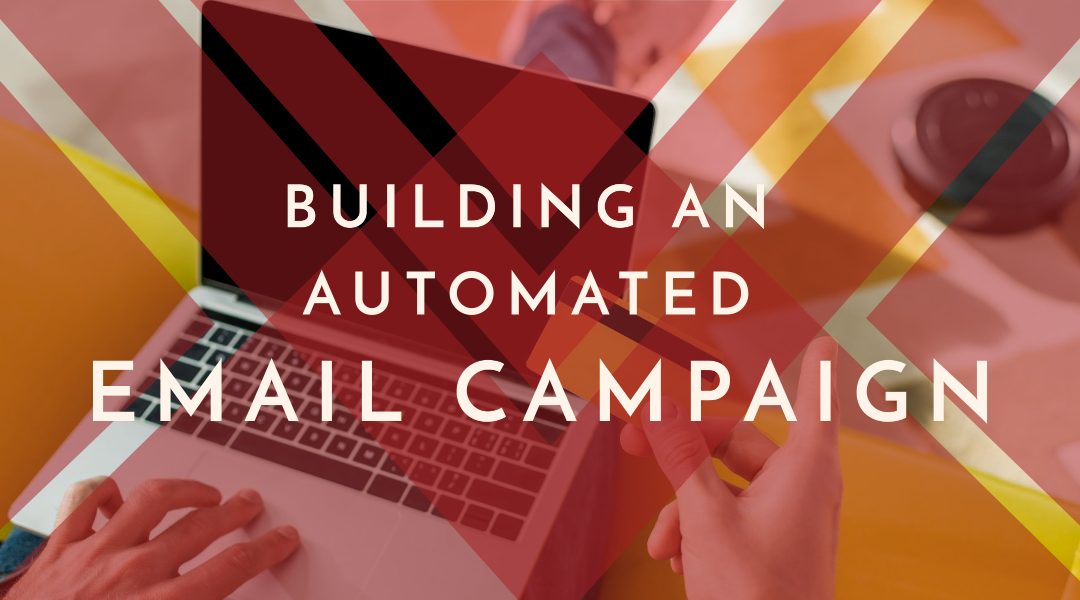“Email has an ability many channels don’t: creating valuable, personal touches – at scale.” – David Newman
There are people out there who think that automation is for big companies who have hundreds of thousands of customers and think taking care of each and every one of them every single timeis just far too time consuming and inefficient. That’s just simply not true! Automation is for everyone, from the solopreneur that’s starting a business, to the mid-sized company with several customers a day.
Automating your email campaigns can save you time, help you with repetitive and routine tasks, and also make your conversion funnel more efficient. This can result in a higher ROI for your company.
The key to an automated campaign is testing. You have to test the whole process first and then tweak it here and there to ensure you get the best results possible.
STEP 1 – Find a process that can be automated through email
Before even thinking of how you can automate your processes, you have to think of what you can automate. Think of all the repetitive processes that could end up being tedious for your customer in your company. For instance:
- Welcome emails when they subscribe to your newsletter,
- Referral or review requests after they have purchased a product,
- Upselling emails after a lead magnet has been downloaded,
- List segmentation after filling out a form…
All the above are examples of automated campaigns that you can start creating or testing for your business.
STEP 2 – Create a form that properly segments your audience
Whenever you’re capturing information from your leads on a form, it’s important to make sure to identify and separate contacts that are already in your list from those that are brand new. Doing this will allow you to:
- Avoid sending repeated information to your actual contacts.
- Tag and segment contacts by interest and engagement.
- Re-engage with unengaged contacts.
- And send the right offer to the right person…
STEP 3 – Design the conversion funnel
Every funnel you design has a goal. Sometimes the goal is to drive traffic to your blog, other times it is to make your contacts buy a low-priced product, and sometimes it is getting your contacts to hire you as a consultant. Whatever the goal is, the whole funnel must guide the contact to the conversion and, ultimately, to the completion of that goal.
If you were to sell something with your funnel, you have to create a winning message. You can use tactics like social proof – showing what other customers think or why they recommend you or your products and services; bonding – showing how much you care and understand your customer’s fears; stating the benefits – highlighting the solutions you’re providing and help them perceive the desired end result, and sometimes scarcity – letting them know that the offer is going to expire and is a now or never opportunity.
You can use all of the tactics above in different buying stages to move your prospect one step closer to the conversion.
I recommend you track the behavior of your contact during every stage to see where their interest is dropping. Then you’ll know when to stop messaging them if they are not showing enough interest in what you have to offer them. You can do that by creating a yes/no decision funnel where contacts move to the next logical message when they click, open or take action in an email. Nobody wants to feel like they’re being pushed to do something they don’t want to do. So don’t do that with your email campaigns.
STEP 4 – Analyze the results
Once you have an email funnel up and running check your data. How can you improve the results? Why are people not opening your emails? Why are your contacts losing interest after the second email? Is your offer not appealing enough? Are you sending too many emails in a very short period of time? Is the price too high for this buying stage? Check all the indicators that can tell you what can possibly be wrong. Then make a list of improvements that you can apply and test before deciding to modify the funnel.
STEP 5 – Make data-driven decisions
If you’re going to apply changes to your funnel, make sure you only apply one change at a time. By only making one change at a time, you can make sure you understand which change is making the difference. Test the first funnel and the improved funnel and compare the results. Then make data-driven decisions and apply the changes that give you better results. Repeat the process and start saving time and getting a higher ROI.

